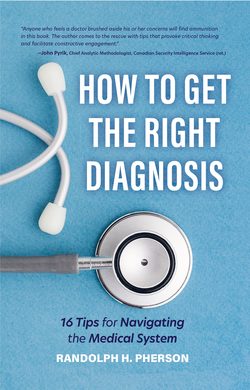Читать книгу How to Get the Right Diagnosis - Randolph H. Pherson - Страница 14
На сайте Литреса книга снята с продажи.
ОглавлениеFigure 4. Testing Lung Capacity on a Treadmill
times before, during, and after running, both at home and on business trips to Tucson, Arizona, and El Paso, Texas. I did not record any significant findings, and little changed when I started using the Alvesco inhaler again in late September.
I reviewed my situation with my family doctor. We were running out of specialists to query about my condition. She suggested that I submit my case to the Undiagnosed Diseases Program run by the National Human Genome Institute at the National Institutes of Health and Office of Rare Diseases Research. This would require me to prepare a case history that my family doctor could augment with relevant test results and other paperwork.
If the program agreed to take my case, the process would be to distribute my narrative and test results to a large pool of doctors representing a broad range of specialties who would collaborate in exploring my symptoms and medical test results. My family doctor had used this procedure successfully once before for another patient. It took me a couple weeks to pull all the details into a single narrative (which forms the basis of this chapter). I submitted the application in August 2013. It wasn’t until February 6, 2014 that I received confirmation that they had received my letter and would review my application.
In late February 2014, I was back in Barcelona with my wife conducting a Train the Trainers workshop at a local university. After almost a week in the classroom, we spent a day sightseeing. I vividly remember having difficulty climbing a long hill. Halfway up the slope, I turned to my wife and said, “If you did a straight-line projection on my ability to breathe, I think I could be dead in one or two months. Obviously, life does not move in straight lines, so I probably have more time than that, but I really am becoming concerned.” To be fair, my condition did not prevent me that day from walking twelve blocks through the Old City while lugging eight bottles of Catalonian wine, which we carried back in our luggage to the United States.
As noted in the Preface, on Friday, March 7, I fell short of breath walking to the meeting at the State Department. I decided that I needed to visit my family doctor as soon as the weekend was over. On Saturday, three other runners in my club and I set out from my home with twenty pounds of flour to mark a five-mile trail that the rest of the runners would follow that afternoon. We were out for over two-and-a-half hours setting the trail. I was able to guide my colleagues on how best to set the course but was having difficulty carrying flour and could only walk, not run. That afternoon, over thirty runners showed up to run the course, socialize afterwards, and celebrate my sixty-fifth birthday.
On Monday, March 10, I went to see my family doctor. She took one look at me, asked a few questions, and told me to drive directly to an emergency room. On the morning of March 12, I underwent major surgery that saved my life.
The next three chapters document the lessons I learned from trying unsuccessfully for five years to get a diagnosis of my condition. My saga involved working with a dozen different doctors representing six different specialties and trying over a dozen different medications. In the process, I learned a lot about the state of medical practice in the United States and what can be done to improve your chances of surviving. If you want to cheat, you can jump to chapter five to learn what transpired at the hospital and afterward.
